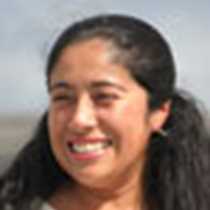Today we spent the last day of our expedition at the island of Genovesa. It took us several hours of navigation to reach the island, which is located in the northern hemisphere and is home for more than a million birds! In the morning, we went out to explore Darwin Bay. We had an easy landing on a white sand beach covered by pieces of white coral. No matter where we looked, we spotted birds everywhere. Indeed, Genovesa Island holds the largest colony of red-footed boobies on Earth. More than 200,000 red-footed boobies are found here. These birds are so beautiful. They have a gorgeous blue beak with a pink mask and a black outline beneath their beaks. Red-footed boobies nest on bushes and trees. Their call is very distinctive and loud, and males and females are alike.
During our easy stroll at Darwin’s Bay, our guests were lucky as they witnessed a swallow-tailed gull emerge from its shell. It was a miracle and a wonder of nature.
I was fortunate to go kayaking with our guests inside of the protected caldera of Genovesa Island, and we enjoyed our last opportunity for deep water snorkeling. The waters are warmer here, and there are many colorful fish to observe.
In the afternoon, we went to Prince Phillip’s Steps. After climbing the uneven steps, we reached the plateau and went to look for the elusive short-eared owl. We were very lucky, as we spotted two owls right by the trail. This is the best time of year for the owls. The storm petrels are nesting, and there is plenty of food for the owls.
We went back onboard with feelings of amazement and gratitude. Galapagos is like the Garden of Eden. Humans encounter nature, and animals are not afraid of us. Those are the gifts that we keep for the rest of our lives!









